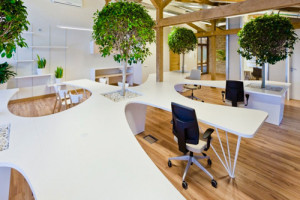 NABERS explained – article written by Andrew Brown
NABERS explained – article written by Andrew Brown
Sustainability and business are no longer mortal enemies. On the contrary, more and more enterprises are realising that going ‘green’ makes cold hard economic sense. This overarching trend is borne out by increasing demand for environmentally friendly office space.
A recent report by the World Green Building Council argues that the debate surrounding ‘green’ buildings has shifted away from a ‘save the environment’ narrative and now focuses on the financial benefits sustainable offices can provide.
It’s no secret that environmentally focused building design can slash ongoing costs associated with lighting, temperature control and water usage. At the same time ‘green’ buildings deliver significant intangible advantages. For instance numerous academic studies show that factors such as natural lighting and good ventilation positively affects worker wellbeing and ergo productivity. Not least, sustainable practice elevates an organisation’s corporate image, boosting its credibility in the eyes of both clients and prospective employees.
NABERS makes it easy
Whilst many companies want sustainable office space, most lack both the time and expertise to wade through the myriad of factors that influence a building’s environmental impact. Fortunately the Australian government has devised a comprehensive yet easy to understand system for rating a commercial building’s ‘green’ performance.
Managed by the NSW Office of Environment and Heritage, the National Australian Built Environment Ratings System (NABERS) benchmarks a building’s environmental credentials using a simple star system. NABERS measures a buildings actual performance based on its recent energy and water usage, waste management and the indoor environment and ranks it on a scale of one to six stars.
A six star rating denotes a market leading performance. So far only one Australian building has received this accolade – Sirius House in Canberra. However a number of other buildings including Legion House in Sydney and 76 Berry Street, North Sydney have signed a NABERS Six Star Energy Commitment Agreement with the NSW Government. To put this in perspective, a six star rated building emits 50% less green house gas than a five star rated building.
At the other end of the scale a zero star rating reveals an extremely poor performance with enormous scope for improvement. Three stars is average.
NABERS offers a range of services including ‘accredited ratings’ performed by qualified assessors and online tools for self-rating. An accredited rating is a legal requirement under the
Commercial Buildings Disclosure program which requires energy information to be made public when office spaces of over 2,000 sqm are offered for sale or lease.
A formal accreditation is also mandatory for joining the City Switch Green Office initiative, a Commonwealth Government funded program which aims to help businesses reduce their carbon footprint.
Over 75% of Australia’s office stock has been through the NABERS process making our commercial real estate market one of the greenest in the world.
Andrew Brown is the Chief Operating Officer at JAGONAL – Australia’s office space search engine. A veteran of a number of successful IT start ups in the commercial real estate sector, Andrew brings to JAGONAL an impressive combination of technical expertise and business acumen.




